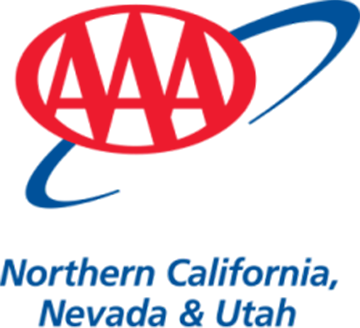For more than 100 years, AAA Northern California, Nevada & Utah (AAA NCNU) has protected its members on the road and at home. With its long history, the organization remains forward thinking, with a razor-sharp focus on serving its members. That means reducing administrative overhead in favor of time with members. That means combining human capital management with financial management to improve operations. That means Workday.
“We started with a small band of early-era motorists at the Cliff House in San Francisco,” says Paul Gaffney, president and CEO of AAA NCNU. “And now we serve more than 4.2 million members. Our vision is to create fanatically loyal lifetime members by delivering consistently outstanding member experiences.”
He’s clear on how to realize this vision: “We need to have a great internal culture that allows those who deliver those experiences to really be in touch with the members they serve and to understand how that impacts the business.”
Workday provides that understanding with its unified suite of applications.“Workday is the core tool that gives everyone in our company visibility into how we’re doing on core financials, on human development,” says Gaffney.
Workday provides the ability to manage your people in a single place and see how your company is performing financially. It is the only tool I know of that does that.
COO
A gift for strategic planning.
Siobhán Mc Feeney, the company’s chief operating officer, praises Workday for its ability to provide a complete performance picture, which enables her team to forecast in a meaningful way. She was with the company in 2011 when Workday was deployed.
“We had armies of accountants massaging things together,” she says of the systems before Workday. “We never knew where we would actually end up at the end of a month or the year. With Workday, you know where you stand.” The company can now look ahead with confidence.
“Previously, I couldn’t really spend time on growth because it was just a shot in the dark,” she says. “I can actually now use real information from Workday, both from our people side and our financial side, to say, it’s likely we could grow in these five lines. And here’s what it might look like. It’s going to be a gift in this year’s strategic planning. It’s a big deal.”
AAA NCNU had a very aggressive deployment timeline that Workday helped realize, going live in just 14 weeks. “We turned off the old system on July 1 and went live. And every single person managed to get their expenses paid. The world is moving fast. People move fast,” says Mc Feeney. And so, as her team discovered, does Workday.
Cost savings, employee relationships, and financial systems.
Mc Feeney makes it clear that saving money was not the only factor in selecting Workday. “Obviously it saved us a lot of money. But that really wasn’t the ultimate driver. It was employees needing to know how they’re doing in the company and managers needing to know how to manage and develop their team. And financial systems that were not burdensome. Workday met all those criteria. It will grow with us in the future.”
Still, the cost savings have been significant for the company. Mc Feeney estimates that the company has reduced the cost of running payroll, human capital management (HCM), and financial management by 50 percent, ongoing. “And we’re able to redeploy that into other parts of the business,” she says.
Osh O’Crowley, the company’s chief information officer, looks at the cost savings with Workday compared with other systems he has administered.
“As CIO, when I look at how we spend our money on technology, I’m not caught in that amortization and depreciation loop that most CIOs have when investing in something. And you’ve got to make it last five to seven years. You’ve got to upgrade it. You’ve got to keep it alive.” But with Workday, “I don’t have the data centers that run all those technologies. I don’t have DBAs. I don’t have licensing costs. I buy what I need. We tie it together, and we focus on our members,” he says.
Commitment to the cloud.
当公司从其合作伙伴保险company in 2011 and reviewed its approaches, it wanted to create a leaner company with a sharper focus on its members. As a result, it made a commitment to cloud-based technology.
“Most people are not in the business of running and hosting accounting and human resources software,” as O’Crowley puts it. “Workday gives us the chance to not be in that business, to let someone who really knows what they’re doing do it.”
“在我以前的经验,很多技术再保险sources focus on just keeping the technology alive,” he says. “I’ve worked with big ERP applications and I remember so many conversations around how our version is out of date, we need to do an upgrade or we can’t do this because of that. A lot of what I would call ‘administrivia’ that added no value to the core business.”
He finds that Workday allows him to focus on the member experience. “We spend very little time on the supporting functions inside the organization,” he says. “The functions work. They do what we need them to do. They’re easy to use. And we focus the rest of that time on our members.”
Gaffney concurs. “We can put much more emphasis on line management and much less emphasis on staff functions,” he says. “That lets us all spend more time improving our core operation. We make better decisions. We make them in a more timely fashion. And we’re less distracted by administration.”
“Since we deployed Workday’s unified suite for HR and Finance, the resources dedicated to support have been cut significantly. We now have about a third of the resources on support, and we’re able to redeploy the other two-thirds to our business priorities,” he says.
HCM and financial management: a logical combination.
Gaffney appreciates that Workday HCM and Workday Financial Management are part of the same system. “One of the big benefits of having a unified suite is the methods are common across those two functions. So we count on managers to be both disciplined financial operators and great people managers. It’s wonderful for them to be using a common toolkit in both of those domains,” he says.
“Historically those things have been separate. We’re very rarely in HR mode or finance mode. We’re managing a business that gets delivered through people, and the core measure of that business is financial. And having that in one system just makes a lot of sense. I don’t know why no one did it before,” he says.
Finally, Workday makes it easier for AAA NCNU to grow, a benefit Gaffney is excited about. “We will be getting into new businesses. The flexibility of the unified suite to allow us to enter a new business without having to go get another piece of infrastructure software to support that business is really an important, ongoing benefit,” he says.
From the operational perspective, Mc Feeney sees the advantage of having a single version of the truth. “The data is in one place,” she says. “It’s accurate. It’s timely. It’s super easy to use. People love it because it takes all complication out of their day.”
How would she sum it up for others thinking of making the switch to Workday?
“If you want to make your life easy—easier in managing your employees and finding a way to be truly clear about where you are as a company—this suite of applications provides that,” she concludes. “Workday provides the ability to manage your people in a single place and see that integration with how your company is performing financially. It is the only tool I know of that does that. And it lets you focus on bigger things.”

